Welcome to the first episode of Five @ 5 on a Friday with me! This platform is to show and tell – I’ll share what’s looking good in the garden this week, or what interesting things I’m sowing or what I’m doing with my harvests, or even which big fails have happened!
This week, as it is the first episode, I’m focusing on only the good – showstoppers as it is, in my garden this week:
Click on link above to view YouTube video
1. Serendipitous Combination – Scentimental Rose and Shirley Poppy
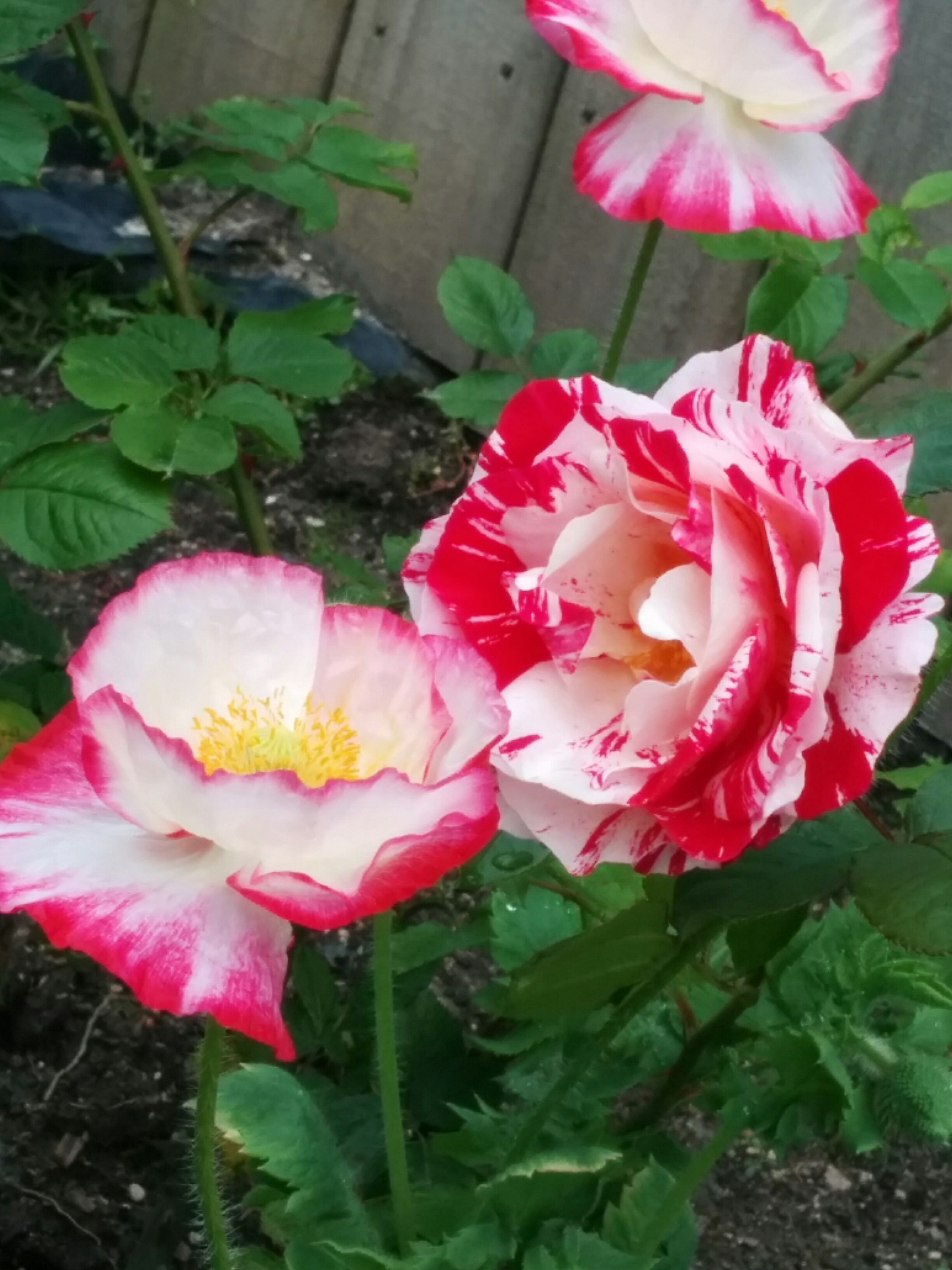 The rose, Scentimental, was a mother’s day gift from my husband this year and planted bare-rooted in May. First I thought it was going to be a bit garish with its stripes, but I felt rebellious enough to want it for exactly that quality, and because it is a perfumed rose perfect for the entrance to our front deck. I am happy to say that I am absolutely delighted by the look of this rose – it is far more pink than I thought, and fades to an even lighter pink as the flowers age, but I still love it. It is the first rose to flower in my garden this season, and the blooms, although they open fully quite quickly, seem to last quite a while on the plant.
The rose, Scentimental, was a mother’s day gift from my husband this year and planted bare-rooted in May. First I thought it was going to be a bit garish with its stripes, but I felt rebellious enough to want it for exactly that quality, and because it is a perfumed rose perfect for the entrance to our front deck. I am happy to say that I am absolutely delighted by the look of this rose – it is far more pink than I thought, and fades to an even lighter pink as the flowers age, but I still love it. It is the first rose to flower in my garden this season, and the blooms, although they open fully quite quickly, seem to last quite a while on the plant.
According to Matthew’s Roses where we got it from – it is a Floribunda rose reaching 1m with distinctive striped white and burgundy blooms with repeat flowering that are spicily scented.
The Shirley poppy was one of about 500 from a mixed colour packet that a sowed, and it just happened to be one with pink and white blooms! The combination of the rose and the poppy stops people in their tracks as they make their way to my front door.
Growing Poppies
To grow early spring-flowering poppies, sow in autumn, but sowing in early spring is also fine. A lot of people suggest to sow poppies directly as they dislike being moved, but I have found that while they are still small enough poppies don’t suffer from being transplanted, so I tend to sow my poppies in trays to plant out later. Don’t cover seed too thickly when you’ve sown them, just a light dusting of propagation mix should be more than sufficient.
Poppies are easy to grow – as long as you can keep snails and slugs from the seedlings, and stake the plants when they get a bit top-heavy and fall over in the wind. Preferring a light well-drained soil, but they are not too fussy about the soil they grow in and flower really well in a position where they get some good hours of full morning sun, but have more shade toward midday or late afternoon. Poppies self-seed easily, and you may find them popp(y)ing up everywhere next year if you let the flower heads go to seed.
2. Poached Egg Flower
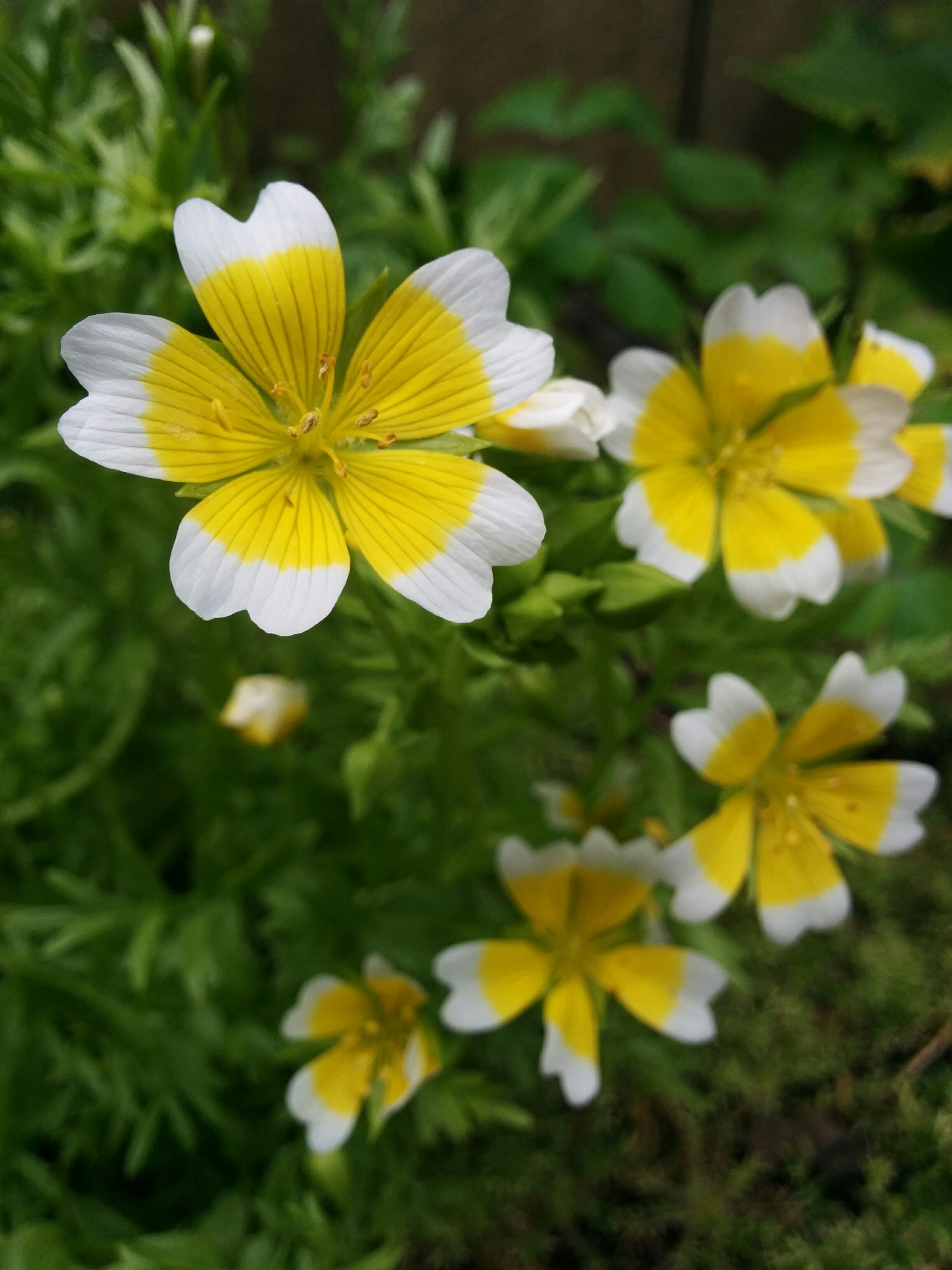 Meadow foam, or Poached-Egg-Flower was a new plant for me last year, and I got it because it was said to be good for bringing beneficial insects to the garden. All the meadow foam I have this year are purely from self-seeded plants! I had a patch germinate where I didn’t want so many, so I simply pricked them out and moved them to a different area, and although they sulked for a day or so after the move, they recovered brilliantly, and I now have 4 new dedicated areas for my meadow foam to go wild in.
Meadow foam, or Poached-Egg-Flower was a new plant for me last year, and I got it because it was said to be good for bringing beneficial insects to the garden. All the meadow foam I have this year are purely from self-seeded plants! I had a patch germinate where I didn’t want so many, so I simply pricked them out and moved them to a different area, and although they sulked for a day or so after the move, they recovered brilliantly, and I now have 4 new dedicated areas for my meadow foam to go wild in.
Growing meadow foam
It’s botanical name is Limnanthes douglasii and it is a spreading branching annual. Because it is low-growing, it is a good choice for the front of mixed flower borders, or to companion plant with taller vegetables like tomatoes or sweetcorn, or at the edges of walkways where the cheerful blossoms will show off best.
Sow in autumn in frost free areas, or early spring, although they are somewhat frost tolerant, they don’t survive hard freezes. They prefer well-drained and moist soil, and do well in a full sun position. They flower profusely in early to mid spring, but tend to slow down as the weather gets too hot. To prevent them from becoming a pest, pull up spent flowers before they can self-seed, or if you don’t mind them taking over swathes of your garden next spring, just leave them be.
Meadow foam is generally pest and disease free, although slugs do like to munch on the seedlings, I’ve not had any completely annihilated.
3. Crabapple blossoms
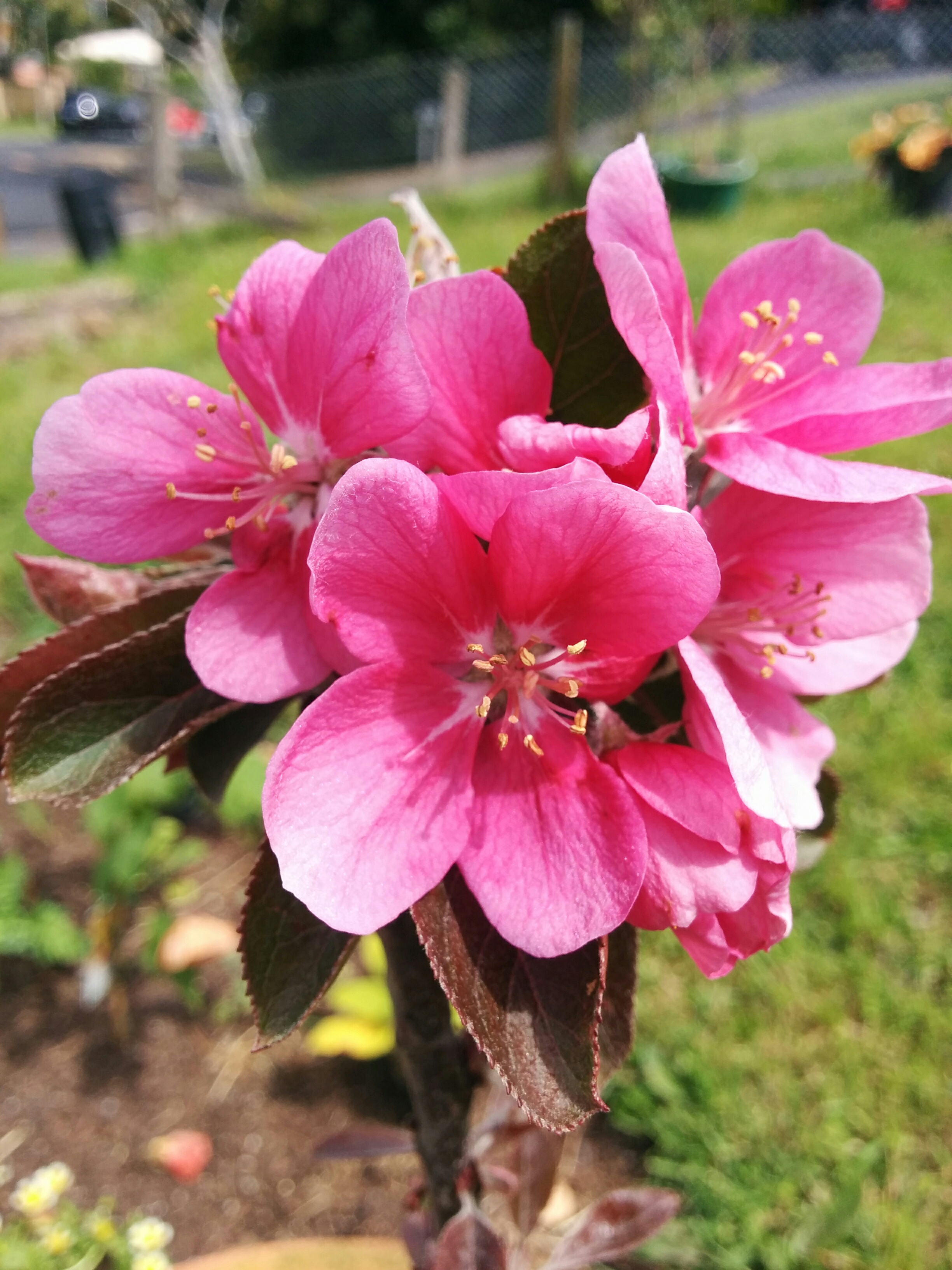 I’ve always had this thought that you’re a true homesteader, or self-sufficient gardener, only once you have had your own apples growing. Moving countries, and then renting small places in suburbia has made this seem like an impossible dream to me… until I decided to heck with it all, and looked into dwarf apples. I treated myself to a pair of columnar crab apples this season (how more “farm-mama” can you get than making jelly and jam from your own crab apples!?) and am over the top ecstatic about my first blossoms!
I’ve always had this thought that you’re a true homesteader, or self-sufficient gardener, only once you have had your own apples growing. Moving countries, and then renting small places in suburbia has made this seem like an impossible dream to me… until I decided to heck with it all, and looked into dwarf apples. I treated myself to a pair of columnar crab apples this season (how more “farm-mama” can you get than making jelly and jam from your own crab apples!?) and am over the top ecstatic about my first blossoms!
These are crab apple – Ballerina Maypole, and as the tag suggested, I planted them as a sentinel pair alongside my archway in the pollinator (driveway) garden. I’ve got them in large pots, I think they’ll do fine there for at least a couple of years. The leaves and the blossoms sure are beautiful! According to Waimea nurseries, where I got them from, the masses of attractive carmine flowers are followed by large purple-red apples ideal for jelly. Reaches 4×0.3m.
4. Broad Beans – Hughey’s Crimson
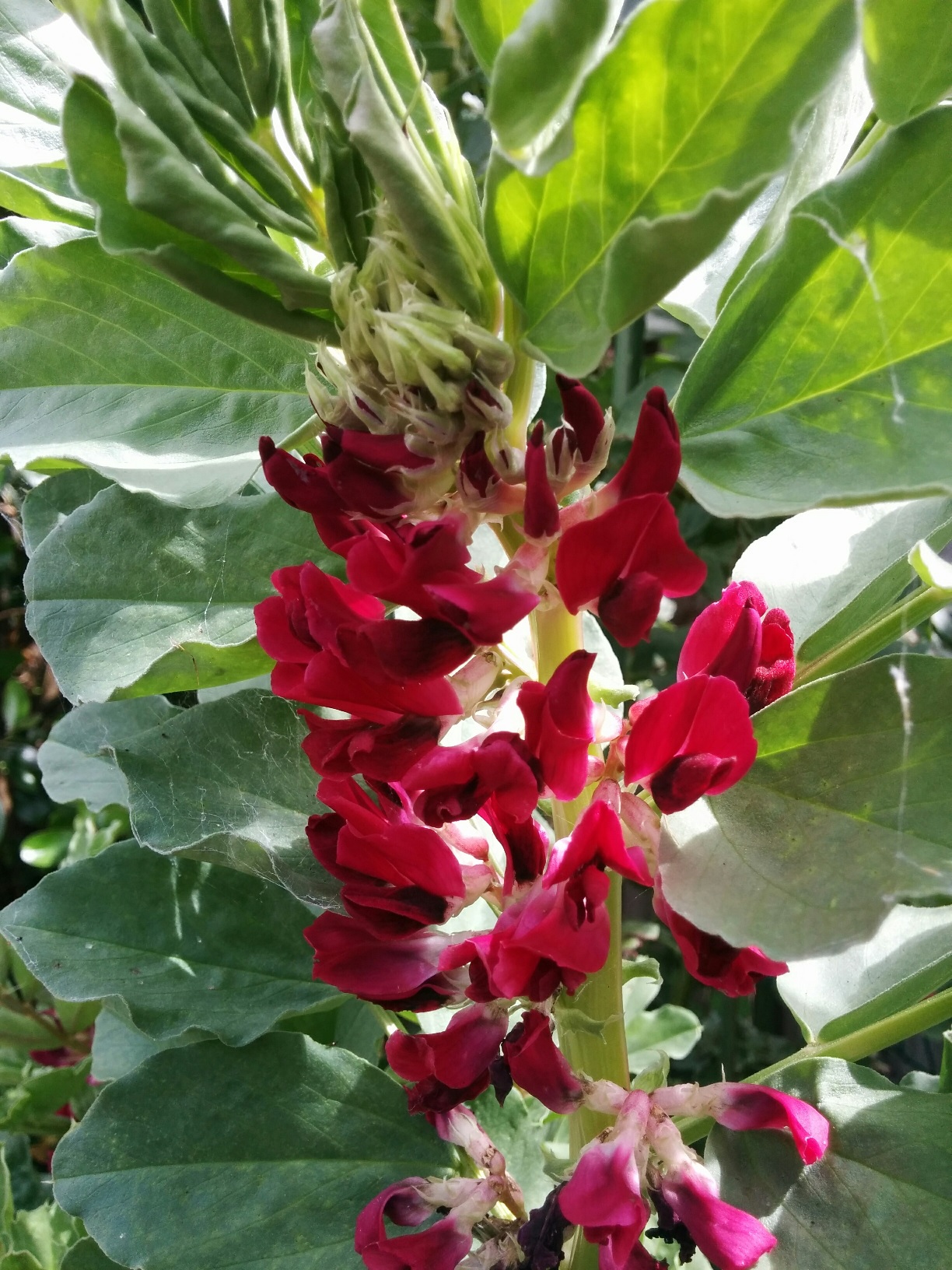 Since I first grew these two years ago, I have decided that I no longer care for the normal white-blossomed broad beans…the colour on these flowers are simply amazing! They produce delicious pods of fat and juicy broad beans, although, as I mentioned in the video, they are not as long-podded as the exhibition varieties of broad beans. Still, I will have to have a much larger section to grow the white ones again – these crimson flowered ones have place of pride as a pretty edible flower, and an edible vegetable.
Since I first grew these two years ago, I have decided that I no longer care for the normal white-blossomed broad beans…the colour on these flowers are simply amazing! They produce delicious pods of fat and juicy broad beans, although, as I mentioned in the video, they are not as long-podded as the exhibition varieties of broad beans. Still, I will have to have a much larger section to grow the white ones again – these crimson flowered ones have place of pride as a pretty edible flower, and an edible vegetable.
Growing broad beans
Preferring cool and moist conditions, they do well in almost any well drained soil. They don’t need to be feeded if started in a good soil. Sow directly, or in punnets for transplanting later. Space individual plants around 20cm from each other in rows 15cm apart. As they can grow really tall, staking may be required in windy positions. Harvesting is as soon as 3-4 months after sowing (sow in late autumn if you want a spring crop). They may be bothered by aphids or snails, but are generally quite problem free.
Once you have harvested your broad beans, dig the roots back into the soil to feed the soil with nitrogen.
Did you know – broad bean flowers are edible too!
5. Tomatoes!
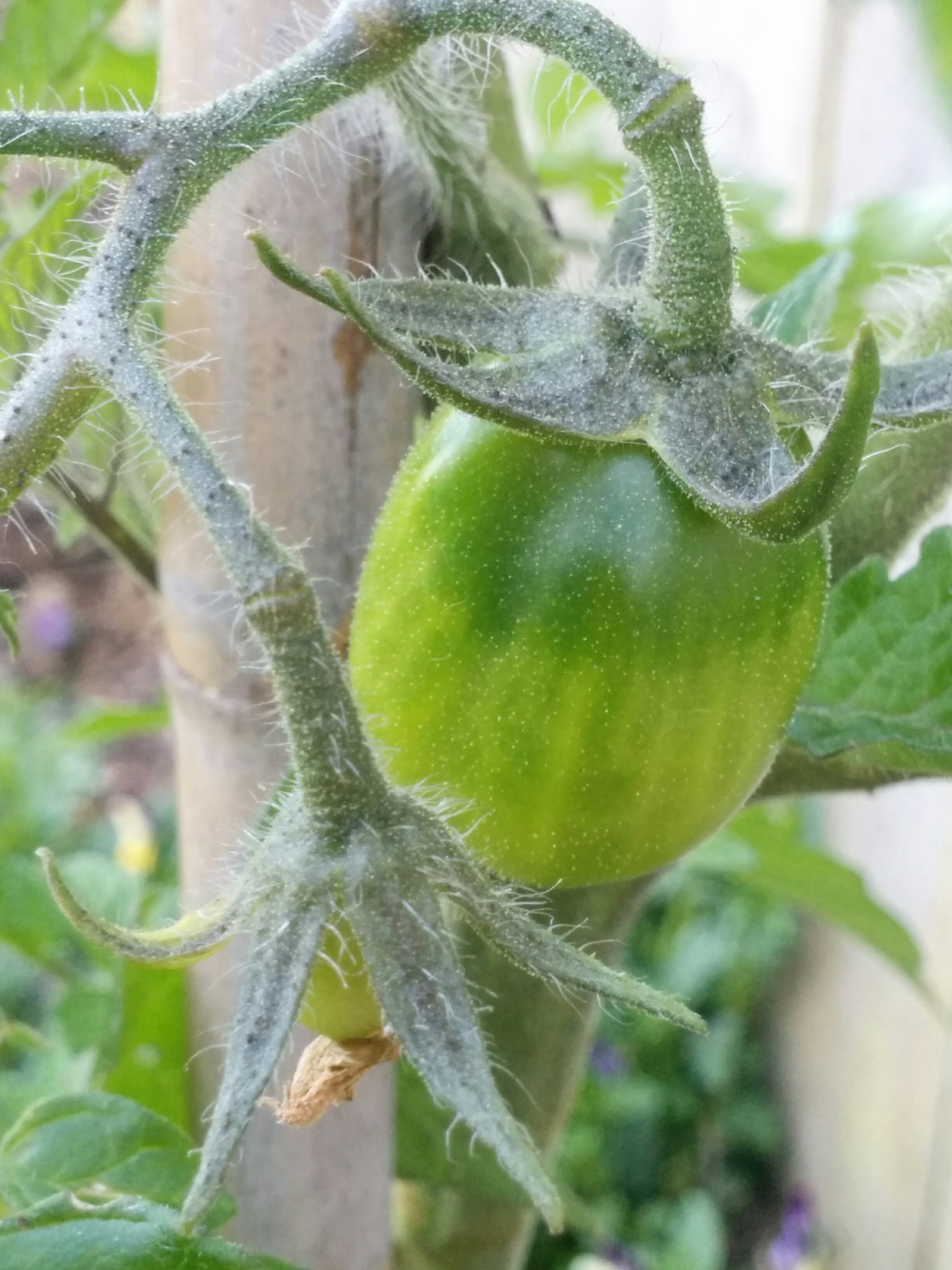 Well now… tomatoes! Five years ago I grew 9 patio tomatoes and thought I was insane for growing “that many” tomatoes! Today, I have fallen into a complete addiction to heirloom tomatoes! For the nursery I grow more than 70 varieites, and if only I had space for them all in my garden… but I only have space for 25…
Well now… tomatoes! Five years ago I grew 9 patio tomatoes and thought I was insane for growing “that many” tomatoes! Today, I have fallen into a complete addiction to heirloom tomatoes! For the nursery I grow more than 70 varieites, and if only I had space for them all in my garden… but I only have space for 25…
This is the first year I am growing this variety – called Black Pear – and am already impressed with the strength of this plant, and the fact that it was the first one to bear fruit.
Yes, I started my tomatoes earlier than early – in mid JULY!!! And planted this particular one out mid September, but I am super happy with how well it has grown. Remember to take into consideration YOUR own area – your soil should be warm, your night-time shouldn’t fall below 10C, and no more frosts should be expected.
See here for my top ten tips on growing tomatoes.
Thank you
I hope you’ve enjoyed my little ramble about my garden. See you back next week for more Five at 5.
Notes:
1. I do not run affiliate programs, if I mention a product or a nursery in my posts, it is without monetary or any other incentive from them to do so, and because I either believe in their product, or it was the only place to get what I needed.
2. I am proud to say that my daughter has edited all the video! Go PrincessDestinyJewel10!
